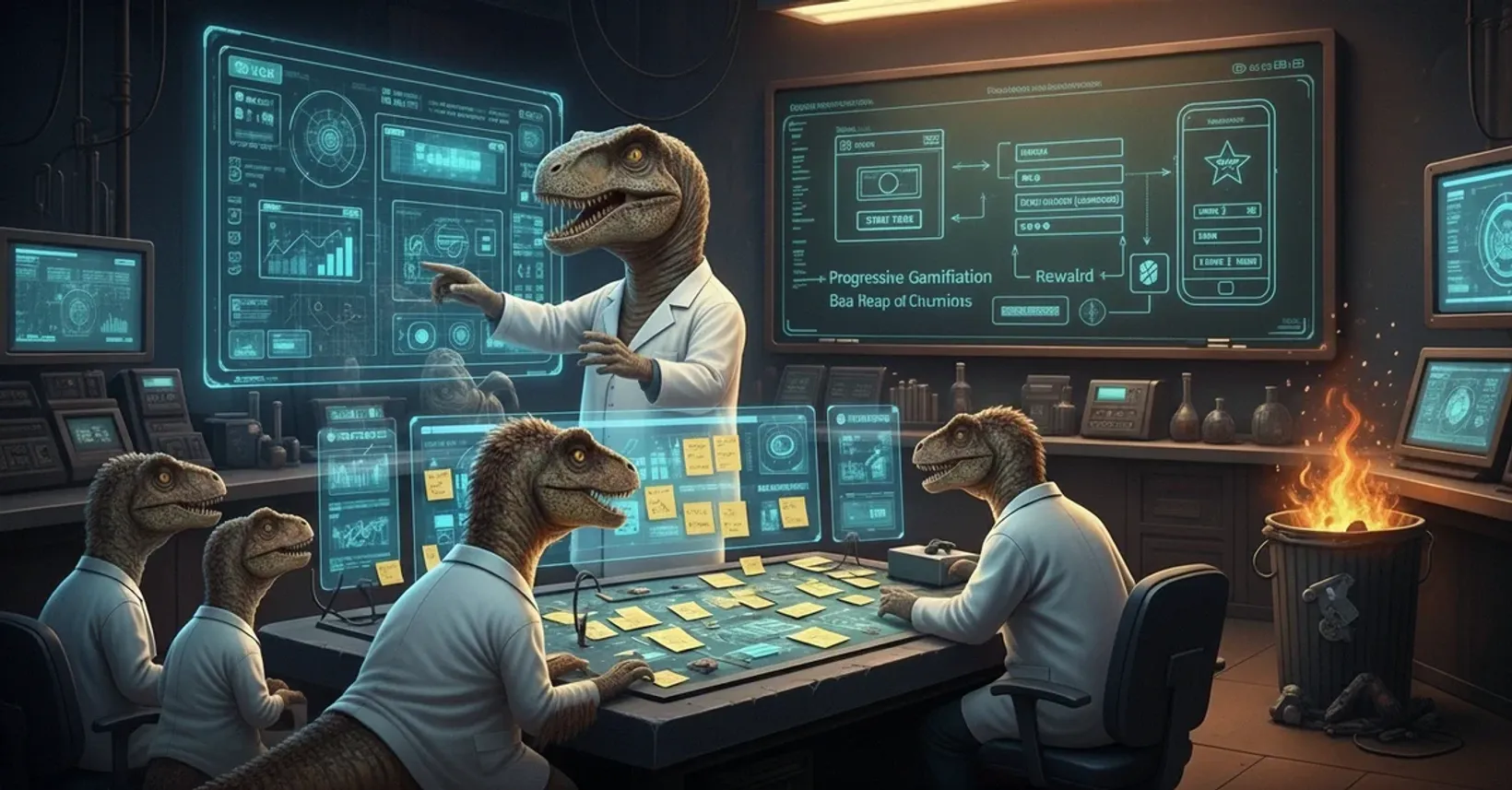The educational technology sector is booming, with global EdTech investments reaching unprecedented heights. Yet for every success story like Khan Academy or Duolingo, there's a graveyard of failed educational apps that never found their footing. At Rapptr Labs, we've worked with educational startups and established institutions alike, and we've seen firsthand what separates thriving EdTech platforms from those that struggle to engage their users.
We've identified four critical design mistakes that consistently kill student engagement in educational apps. More importantly, we'll show you how to avoid them.
The Stakes: Why EdTech UX Matters More Than Ever
In traditional classroom settings, students have limited alternatives when content is poorly presented. But in the digital realm, users have infinite options just a tap away. Educational apps must compete not only with other learning platforms but with every engaging digital experience students encounter daily, from social media to gaming apps.
The numbers tell the story: studies show that 90% of educational apps are deleted within 30 days of download, often because they fail to maintain user engagement beyond the initial interaction. For EdTech companies, poor user experience means failed learning outcomes and ultimately, failed businesses.
Mistake #1: Overwhelming Users with Information Density
The Problem: Many EdTech platforms try to pack too much content onto single screens, creating cognitive overload that paralyzes rather than empowers learners.
The Solution: Progressive information disclosure and strategic white space.
At Rapptr Labs, our design-first approach prioritizes clarity and focus. We employ progressive disclosure techniques, revealing information in digestible chunks based on user context and learning objectives. Our designers create hierarchical information architectures that guide users naturally through learning pathways without overwhelming them.
For educational platforms, this means:
-
Designing focused single-task interfaces
-
Using strategic white space to reduce cognitive load
-
Implementing contextual navigation that adapts to learning progress
-
Creating clear visual hierarchies that guide attention to primary actions
Mistake #2: Ignoring Mobile-First Learning Behaviors
The Problem: Many EdTech platforms are desktop-centric, failing to optimize for how students actually consume educational content which are predominantly on mobile devices.
Research shows that 70% of students access learning content primarily through mobile devices, yet many educational apps offer subpar mobile experiences with cramped interfaces, difficult navigation, and content that doesn't translate well to smaller screens.
The Solution: Native mobile development with learning-optimized interfaces.
Our team specializes in building cutting-edge mobile applications that solve real-world problems. For EdTech clients, we focus on:
-
Native iOS and Android development that leverages platform-specific capabilities for optimal performance
-
Mobile-first content presentation with thumb-friendly navigation and appropriately sized interactive elements
-
Offline-first architecture that enables learning continuation even without internet connectivity
-
Progressive Web App (PWA) capabilities for seamless cross-device synchronization
Mistake #3: Generic User Experiences That Ignore Learning Personas
The Problem: EdTech platforms often treat all users the same, failing to account for different learning styles, technical proficiency levels, and educational goals.
A one-size-fits-all approach might work for simple consumer apps, but education is inherently personal. Elementary students, college students, working professionals, and lifelong learners all have different needs, attention spans, and interaction preferences.
The Solution: Data-driven persona development and adaptive interfaces.
At Rapptr Labs, we workshop user personas with clients in 60 minutes or less, using our proven methodologies to identify key user segments and their unique needs. For EdTech platforms, this typically includes:
-
Student personas segmented by age, learning style, and technical comfort
-
Educator personas based on teaching methodology and institutional constraints
-
Administrator personas focused on oversight, reporting, and compliance needs
Our development team then creates adaptive interfaces that personalize the experience based on user behavior, progress, and preferences. Using advanced analytics tools like Mixpanel which is one of our favorite platforms for tracking user engagement, we continuously refine these experiences based on real usage data.
Mistake #4: Failing to Gamify Appropriately
The Problem: Many EdTech apps either ignore gamification entirely or implement it poorly with meaningless badges and points that don't align with learning objectives.
Effective gamification in education is about understanding motivation theory and creating engaging progression systems that support learning goals.
The Solution: Thoughtful gamification aligned with pedagogical principles.
Our design team understands that effective EdTech gamification must:
-
Align with intrinsic motivation rather than relying solely on extrinsic rewards
-
Provide meaningful progress indicators that reflect actual skill development
-
Create appropriate challenge curves that maintain engagement without causing frustration
-
Foster social learning through collaborative features and peer recognition
The Rapptr Labs Approach: Design-First EdTech Development
We build the future of how educational institutions operate, serve students, and achieve learning outcomes. Our approach to EdTech development combines:
-
Strategic Foundation
-
Design Excellence
-
Technical Execution
-
Ongoing Support
Moving Forward: Building EdTech That Actually Engages
We're passionate about using technology to create impactful solutions. From app strategy and design to development, launch, and ongoing support, we're with you every step of the way, continuously refining and evolving your product to maximize student engagement and learning outcomes.
Your success is our success. If you're ready to build an EdTech platform that engages users and drives meaningful learning outcomes, let's discuss how our proven methodologies and 10 years of digital product expertise can help bring your vision to life.
Ready to transform your EdTech idea into a user-engaging reality? Contact our team to learn how we can help you avoid these critical mistakes and build an educational platform that students, educators, and administrators will love to use.
